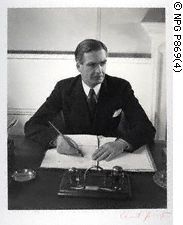"US President Barack Obama approved the drone strike that killed Mullah Akhtar Mansour because the Taliban leader was overseeing plans for new attacks on American targets in Kabul, the Afghan capital, U.S. officials said on Monday.
While the Taliban have yet to confirm the death of their leader Saturday in a remote area in Pakistan near the border with Afghanistan, senior members of the insurgency's leadership council met to begin choosing Mansour's successor.
Two senior members of the movement also said Pakistani authorities had delivered Mansour's badly burned remains for burial in the western city of Quetta. Pakistani officials, however, denied handing over a body.
U.S. forces targeted Mansour because he was plotting attacks that posed "specific imminent threats" to U.S. and coalition forces in Afghanistan, said Navy Captain Jeff Davis, a Pentagon spokesman.
A U.S. official, speaking on condition of anonymity, later specified that the Taliban were planning new attacks against "our interests and our people in Kabul." He did not elaborate.
But the administration hopes Mansour's death will have a long-term impact by pushing the Taliban to end its refusal to engage in peace negotiations with Kabul and "choose the path to reconciliation," the official said".
Jibran Ahmad & Jonathan Landay, "U.S. says late Taliban leader was planning attacks on Americans".
Reuters. 23 May 2016 in
www.reuters.com.
"Afghanistan’s rebel Taliban group has moved quickly to replace its leader who was killed by a US drone strike at the weekend, as it widens a 15-year-old insurgency against the government in Kabul and its western military allies.
The Taliban confirmed on Wednesday that Mullah Akhtar Mansour had been killed on Saturday in a missile attack on his car in Baluchistan, Pakistan. It announced that he had been replaced by Mullah Haibatullah Akhundzada, previously one of his deputies....
Washington appears to have decided that it has nothing to lose by targeting Taliban leaders such as Mansour — who had proved unwilling to join a quadrilateral peace process involving Afghanistan, Pakistan, the US and China — even at the expense of offending Pakistan by operating drones uninvited in its airspace.
On Monday, US President Barack Obama said Mansour’s death would send a “clear signal” to extremists that America would protect its personnel.
Peter Cook, Pentagon spokesman, said that since Mansour had become leader of the Taliban, the group had conducted attacks resulting in tens of thousands of deaths while Mansour himself had been “an obstacle to peace and reconciliation between the government of Afghanistan and the Taliban”.
Officials in Pakistan who follow events in neighbouring Afghanistan said Mullah Akhundzada was unlikely to show interest in the peace process either.
“He is as conservative as they come and has had very little exposure to the outside world,” said one. “For the foreseeable future, I doubt if the Taliban would want to negotiate.”
Victor Mallet & Farhan Bokhari, "Taliban names new leader after death of Mansour in drone strike".
The Financial Times. 25 May 2016, in
www.ft.com.
The assassination of the head of the Taliban while a needed measure has
au fond changed nothing, absolutely nothing on the ground in Afghanistan. As the appointment of his successor indicates. The 'peace talks' option so beloved of commentators and analysts a few years ago, appears to be completely played-out and have reached a
cul de sac diplomatically speaking. The policy of the American Administration and its allies is currently in a holding pattern. With the one-time hoped-for withdrawal of all American fighting forces by the end of 2016 (originally 2014) now a completely forgotten promise. However, such reversals are part and parcel of a consistent policy and indeed strategy of failure and myopia by the American Administration since January 2009. As perhaps the leading American military commentator, Anthony Cordesman recently noted:
"The Administration has already had to accept the fact that its poorly planned and poorly executed efforts to first surge U.S. forces in Afghanistan in 2009, to withdraw them at the end of 2014, and finally to virtually eliminate a U.S. advisory mission by the end of this year, has been a total failure. This withdrawal plan has never taken account of the real world conditions on the ground, or the limits of the Afghan forces that were rushed into being ready for such a mission. These are troops who were forced into their mission only a decade after the United States first intervened in 2001, and were only given the proper funds and trainers as recently as 2011-2012.
The Administration never took full account of the support Pakistan and its Inter-Services Intelligence (ISI) were giving al Qaida and the rebels. It never looked realistically at what would happen if U.S. airpower was not available, and it failed to provide enough U.S. or NATO advisors after 2014 to support Afghan forces at the combat unit level.
It became all too clear during the brief “surge” of U.S. forces that they were concentrated in the wrong place, and were unable to produce anything like the decline in enemy attacks that resulted from the “surge” in Iraq. It became equally clear in 2014 that the Taliban and Haqqani Network were major resurgent threats, and it has become brutally clear since U.S. combat forces formally left at the end of 2014 that the Afghan Army cannot hold all the major population centers and key lines of communication—much less the Afghan country side—without U.S. advisors, the quiet, direct U.S. combat support of critical elite Afghan forces, and U.S. air support. It is even more clear that the Afghan police lack the paramilitary capability to survive on their own, and that the Afghan government cannot protect its local governments, or even sometimes its provincial governments.
The end result is that the United States has been forced to keep committing air power and Special Forces on the ground in spite of plans to end active U.S. participation in combat at the end of 2014" 1.
In short, the war in Afghanistan is something which will more than linger on. The only question is what will occur in the next two to four years, as conditions are stabilize (or more likely) deteriorate further. Will the Americans and their allies increase their numbers of troops and aircraft support or conversely prepare for a Kissingerian 'decent interval' strategy of negotiating a fig leaf withdrawal of Western troops and support for the regime in Kabul. That scenario would be the very worst of all possible worlds.
1. Anthony Cordesman, "Afghanistan: Deciding the Future of the Not Quite “Forgotten War”.
The Center for Strategic and International Studies. 23 May 2016, in
www.csis.org











0 Comments:
Post a Comment
<< Home